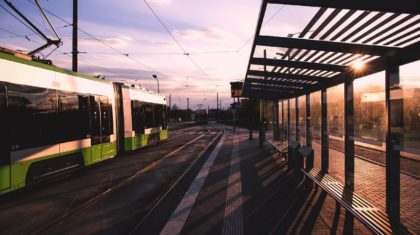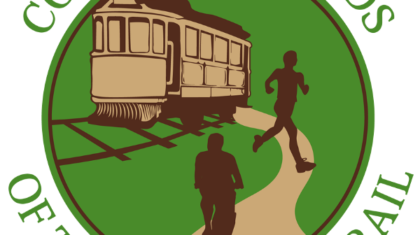
Signs of Change
Over the last several years, the rise of ridesourcing (a.k.a. TNCs, ride hailing, and ridesharing, such as Uber and Lyft) has brought the challenge of curb management to the forefront for cities large and small. Unmanaged curb access can impact a surprisingly broad range of critical city goals, such as transit access, bikeway access and bicyclist safety, parking revenues, traffic flow, pedestrian access, and many others.
Ridesourcing, combined with other forms of shared mobility from carshare to dockless bike share and scooter share, have made point-to-point and on-demand transportation the norm. This is combined with mobility providers taking a direct-to-consumer approach to capture market share and bypass transportation’s traditional channels of communication and regulation. Travelers acting as daily and hourly consumers of mobility services are now setting the standard of expectation for efficiency and convenience in a way not previously possible with public transit, taxis, or other options.
As the testing of autonomous vehicles (AVs) continues to ramp up, and predictions for deployment vary widely, cities are facing new anxiety and uncertainty around what that means for infrastructure quality, design, and safety.
Even scooters have raised safety concerns with pedestrians on sidewalks and trails lodging complaints against scooters, and the scooter riders themselves suffering two recorded deaths to-date, both involving cars. With scooter share use outpacing bike share use in many cities, such as Charlotte, NC, this translates into new and increased demand for low speed infrastructure that is mixed-motorized.
Reactions

The result has been a range of theories about what the streets of the future could look like (example, here and here), which is fun to imagine, but is not always helpful for the here and now. In some cases, the solutions are well thought out and accurate, but only applicable to the highest density urban areas, or to a fully autonomous future rather than the more likely gradual transition. In other cases, the imagined streets prioritize AV access at the expense of bicyclist and pedestrian comfort and transit access.
Industry providers have taken their own initiative to develop solutions they can pitch to cities (like this one or this), though they address only a portion of the current challenges in the right-of-way and are not scaled to system-wide planning.
Reality
The reality is that transportation planning moves slow. Capital projects and infrastructure changes take time. And public sector agencies need to address the challenges in front of them before speculating about the future, and cannot abandon investments in “old mobility” that residents are relying on daily. Local agencies already have decision-making frameworks in place that help to balance needs within the right-of-way and plan for current and future demand.
Is there a way to focus on solutions that can be applied now — that will advance locally-determined goals — while also preparing for the future?
Can we create a framework that makes mobility options better regardless of which version of the autonomous future unfolds — or what new venture-capital-funded shared mobility system shows up in our rights-of-way?
We think we can. And we can do it by building from what we already know works and what local agencies are experienced in doing.
Building from what we know works

- Make Room: In constrained rights-of-way, we re-assign space to serve the objectives we are trying to meet — whether that’s removing a travel lane to provide a safer center turn lane or removing car parking to create room for higher capacity bike corrals.
- Test it Out: Demonstration projects, pop-up bike lanes, and other temporary installations have been used successfully to test new designs and treatments across the country. They offer a faster alternative to major capital projects, allow for real-time public (and industry/private sector) input, and are nimble and adaptable by design.
- Measure the Right Outcomes: The shift toward measuring person throughput rather than vehicle throughput has already laid the groundwork for responding to the demands of new modes and an increased range of multi-passenger vehicles and personal mobility devices.
The result of this approach is a set of eight principles that are rooted in the Complete Streets movement, which set the bar for streets that “are safe for people of all ages and abilities, balance the needs of different modes, and support local land uses, economies, cultures, and natural environments,” but that are also flexible enough to be applied to today’s fast-changing transportation landscape.
Principles

- Prioritize the street’s uses
You have limited space in the right-of-way to move people and to designate as storage space, which means you need to prioritize uses based on the outcomes you want to achieve. Prioritizing use provides the framework for deciding how to assign space.
2. Design for safety regardless of the vehicle or who is driving it
Whether the mode is a bike, scooter, personal car, or driverless car, the laws of physics aren’t changing. Speed kills, crossings are critical, and you need to plan for the most vulnerable users.
3. Assume point-to-point access for micro-mobility and shared vehicles
With the exception of driving personal vehicles and needing to find parking, road users can go point-to-point almost anywhere now. Whether on a scooter or driving, users want to get as close as possible to their destination, often within a constrained right-of-way. The goal is to provide structure and better organize the streetscape for these competing demands.
4. Assume it is multimodal (both the travel lanes and the on-street parking)
Trips consisting of multiple modes and trip chaining are the new reality. Dockless modes have made multimodalism a reality on every block, rather than relegated it to a particular route network — and both the travel lanes and the parking needs on a given street need to be responsive to that.
5. Plan for complete networks
It’s important to design complete streets as a network. By prioritizing uses on one street, it’s important to examine what the impact will be to other streets.
6. Leverage the digital infrastructure
Digital technology is the link between travelers (consumers), the mobility providers, and, in the case of ridesharing, to their drivers as well. Harnessing this technology can enable seamless connections, regulate good behavior, and manage price controls. This digital link is the key to making designated drop-offs and parking zones work, allowing rideshare drivers or e-scooter users the ability to easily find it, and local agencies the ability to track usage. It’s an immediate communication tool and has the potential for built-in enforcement.
7. Choose nimble and movable components whenever possible
We realize that demand on the street and curb is likely to change by factors like time of day, day of the week, and/or season. Our physical infrastructure needs to to be flexible to support uses that change.
8. Manifest your own destiny!
Your street design will dictate what users do. Commit to an outcomes-based approach to planning, design, and engineering. By prioritizing the modes you want people using, you can capture the broader quality of life benefits of economic development, community health, and equity.
Stay tuned for another update next week, when we share examples of how to put these principles into action!
Want to learn more in the meantime? Contact our new mobility expert, Jean Crowther, or subscribe to our new mobility newsletter here.
___________________________________________________________________
Source: There are two recorded scooter deaths: a hit and run in Texas and car crash in Washington DC in Sept; Los Angeles reported first “drunk scooter” rider.; Covered in Streetsblog as E-Scooter Deaths Show Urgent Need for Safer Streets
*Ridesourcing services are prearranged and on-demand transportation services for compensation in which drivers and passengers connect via digital applications. Digital applications are typically used for booking, electronic payment, and ratings.
– “Taxonomy and Definitions for Terms Related to Shared Mobility and Enabling Technologies — J3163™” published by SAE International on September 24, 2018


